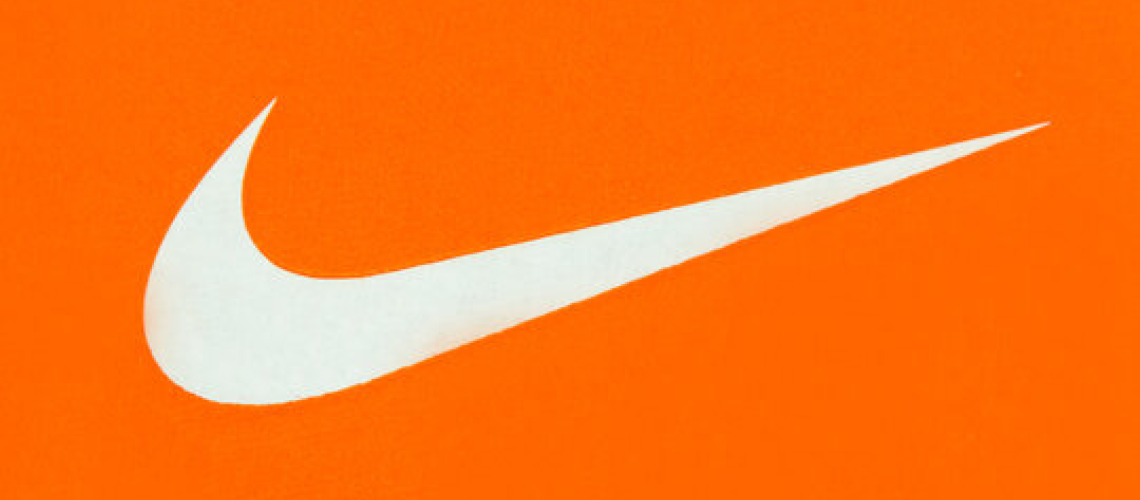* The excerpt is from a founder paper I wrote on Nike for my master’s course, based on Shoe Dog by Phil Knight.
Nike’s Secret Sauce
Like many great sauces, Nike’s “secret sauce” is a special blend of a few different key elements: luck, the right team members, and a strong dedication and connection to the values and vision guided by the leadership of Phil Knight
Luck: At the end of the book, Knight himself admits that luck played a role in Nike’s success. He states, “Hard work is critical, a good team is essential, brains and determination are invaluable, but luck may decide the outcome” (Knight 382). From the very beginning, luck was intertwined with the company’s journey. For example, Knight’s father provided him with critical financial support in the early days allowing Knight to purchase orders from Japan and establish Blue Ribbon Sports. From his dad, he also gained valuable connections in Japan; he recalls how these connections made his first trip to Japan much more effective: “Luckily my father knew people in Tokyo, including a group of American guys working at United Press International” (Knight 22). He was welcomed in a new country, able to run his Crazy Idea by them, and received tips on the intricacies of doing business in Japan. As a result, he was able to secure a distribution deal with Onitsuka. As Blue Ribbon Sports grew, Knight encountered other pivotal moments of luck, such as securing bank loans just in time to keep the company afloat. One striking example occurred in 1970, when Knight was strapped for cash and faced the possibility that all his hard work up until that point would go to waste. At this critical moment, Woodell’s parents, without hesitation, wrote him a check made up of their entire life savings (Knight 161). Another striking example of luck came when Knight happened to connect with a Japanese trading company, Nissho, who had offices close to where he was in America, which would prove instrumental in securing funding. At first, Nissho offered to take a second position on Blue Ribbon Sports’ loans to the Bank of California, providing them some relief right after they got kicked out of their old bank. But the real turning point came during what Knight feared would be a deal-breaking audit. Instead, to his surprise, Nissho not only approved everything, but also took things further by paying off Nike’s entire loan at the Bank of California. In both instances, Nissho’s unexpected generosity was a stroke of luck that enabled Knight to keep the company afloat and expand.
The Right Team Members: In another form of luck, Knight’s ability to find the right team members became the second key component of Nike’s “secret sauce.” Their passion, commitment, and strong belief in the company’s mission helped Nike weather many challenges from development issues to legal battles. Knight was fortunate to know individuals like Bill Bowerman, Jeff Johnson, and Rob Strasser, among many others, each of whom brought their own unique strengths to the table: Bowerman’s obsession with running and his innovative spirit revolution Nike. Johnson’s, sometimes annoying, commitment to the brand helped drive its growth. Strasser’s legal prowess, connections, and marketing helped Nike establish itself. Together, they formed a team that was more than just a group of misfit employees; they were partners who shared a singular vision of success and were willing to make sacrifices to see it realized.
Values and Vision Under Phil Knight’s Leadership: It was the values and vision that defined Knight and therefore the success and culture at Nike. He promoted courage, resilience, a willingness to take risks, and a commitment to pushing boundaries. These and the following values inspired an unwavering pursuit of improvement, adaptability, and innovation, enabling Nike to survive and continuously evolve:
- Strengthening Relationships: Knight placed importance on creating personal connections. He understood the value of face-to-face interactions, often flying to Japan in person to speak with Onitsuka and other countries to tour factories. He believed trust and honest communication made a difference. This philosophy also extends to consumers – as exemplified by the “Just Do It” campaign, launched in 1988, Knight makes it about inspiring people, aligning with their values, and creating trust.
- Hard Work: Phil Knight’s dedication is shown in his relentless work ethic. He worked different, demanding full-time jobs and served in the U.S. Army Reserves all while managing the demands of a budding company. By example, he installed the same hardworking attitude into his employees and consumers.
- Taking Bold Risks: Knight was definitely a risk-taker and the degree to which he took risks was extreme. One of the best examples of his willingness to bet everything on his vision was when he pledged his personal home to secure loans. He was so confident in Nike’s success that he believed his house would be safe.
- Perseverance: “The art of competing, I’d learned from track, was the art of forgetting, and I now reminded myself of that fact. You must forget your limits. You must forget your doubts, your pain, your past […] I thought over all the races in which my mind wanted one thing, and my body wanted another, those laps in which I’d tell my body, ‘yes, you raise some excellent points, but let’s keep going anyway…’ I could not bear the thought of losing” (Knight 61)
- Management: “One lesson I took from all my home-schooling about heroes was that they didn’t say much. None was a blabber-mouth. None micromanaged… Don’t tell people how to do things, tell them what to do and let them surprise you with their results” (Knight 90).
- Motivation: During one of the darkest moments in Nike’s history, when their supplier Onitsuka cut them off and the company faced financial ruin, Knight delivered a passionate, motivating speech: “We’ve come, folks, to a crossroads. Yesterday, our main supplier cut us off. […]I won’t lie to you. We’re definitely going to war, people. But we know the terrain. We know our way around. And that’s one reason I feel in my heart that this is a war we can win. And if we win it, when we win it, I see great things for us on the other side of victory. We are still alive, people. We are still. Alive” (Knight 208).
His vision motivated his team to go beyond just making products and resonated with consumers and employees alike into a shared belief that Nike stood for something greater – inspiration, empowerment, sustainability, etc
The Future of the Business
Looking ahead, Nike plans to build on its legacy and maintain its market leadership through sustainable practices, digital enhancements, and community engagement. Its “Move to Zero” initiative focuses on reducing carbon emissions and waste to meet growing consumer demand for sustainability (“Move to Zero”). Nike’s direct-to-consumer strategy, including e-commerce platforms and membership apps, positions it well in the forever evolving digital retail landscape. Nike also faces increasing competition from newer entrants particularly in footwear, like OnRunning and Hoka. Despite challenges, including declining revenue and profitability, Nike’s strong cash reserves ensure its resilience. As noted by S&P Global, the company’s credit remains solid due to financial flexibility (“Nike Inc. Outlook Revised To Negative”). With new CEO Elliot Hill, Nike is expected to refine its operational and financial strategies to adapt to a changing market (Fonrouge and Golden). The company will shift from short-term cash flow strategies to advancing innovations, particularly in product lines like the Pegasus, aimed at reigniting growth and refocusing on sport (“Earnings call: NIKE Inc. outlines strategic shifts amid Q4 challenges”). In other words, Nike continues to “Just Do It.”
Works Cited
“Coaching & Wellness Expert Tips.” Nike Training Club, Nike, https://www.nike.com/ntc-app/expert-tips. Accessed 14 Nov. 2024.
Dominguez, Liz. “Nike Sports Research Lab Expedites Product Innovation With AI and 4D Motion Capture.” Consumer Goods Technology, 11 Apr. 2024, https://consumergoods.com/nike-sports-research-lab-expedites-product-innovation-ai-and-4d-motion-capture. Accessed 14 Nov. 2024.
“Earnings call: NIKE Inc. outlines strategic shifts amid Q4 challenges.” Investing.com, 28 June 2024, https://www.investing.com/news/stock-market-news/earnings-call-nike-inc-outlines-strategic-shifts-amid-q4-challenges-3500925. Accessed 14 Nov. 2024.
Fonrouge, Gabrielle, and Jessica Golden. “Nike’s New CEO Started as an Intern and Worked His Way Up.” CNBC, CNBC, 1 Oct. 2024, https://www.cnbc.com/2024/10/01/nikes-new-ceo-started-as-an-intern-and-worked-his-way-up.html. Accessed 14 Nov. 2024.
Knight, Phil. Shoe Dog: A Memoir by the Creator of Nike. Simon & Schuster, 2016.
“Move to Zero.” Nike, https://www.nike.com/sustainability. Accessed 14 Nov. 2024.
“Nike, Inc.” Reuters, https://www.reuters.com/markets/companies/NKE/. Accessed 14 Nov. 2024.
“Nike Inc. Outlook Revised To Negative On Revenue And Profitability Declines; ‘AA-‘ Rating Affirmed.” S&P Global Ratings, 17 Oct. 2024, https://disclosure.spglobal.com/ratings/en/regulatory/article/-/view/type/HTML/id/3269682. Accessed 14 Nov. 2024.
Nike, Inc. 2024 Annual Report. 2024, https://s1.q4cdn.com/806093406/files/doc_financials/2024 /ar/427857-1-_7_Nike-2024-Combo_Form-10-K_WR.pdf. Accessed 14 Nov. 2024.
“Nike: From Crisis to Innovation.” AIM2Flourish, https://aim2flourish.com/innovations/nike-from-crisis-to-innovation. Accessed 14 Nov. 2024.
“Nike’s New CEO Started as an Intern and Worked His Way Up.” CNBC, uploaded by CNBC, 1 Oct. 2024, https://www.youtube.com/watch?v=kZH5CJ_CqqY. Accessed 14 Nov. 2024.
Statista. “Total Number of Nike Retail Stores Worldwide.” Statista, https://www.statista.com/statistics/250287/total-number-of-nike-retail-stores-worldwide/. Accessed 14 Nov. 2024.
“Welcome to NIKE, Inc.” Nike, Inc., https://about.nike.com/en/company. Accessed 14 Nov. 2024. “What Is Nike’s Mission?” Nike Help, Nike, https://www.nike.com/help/a/nikeinc-mission. Accessed 14 Nov. 2024.

